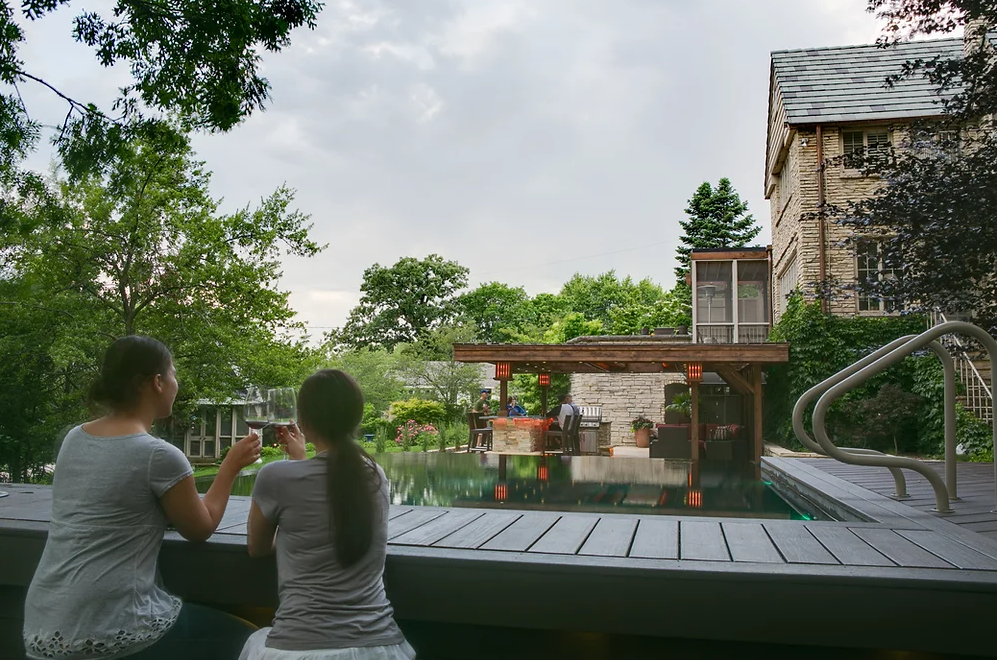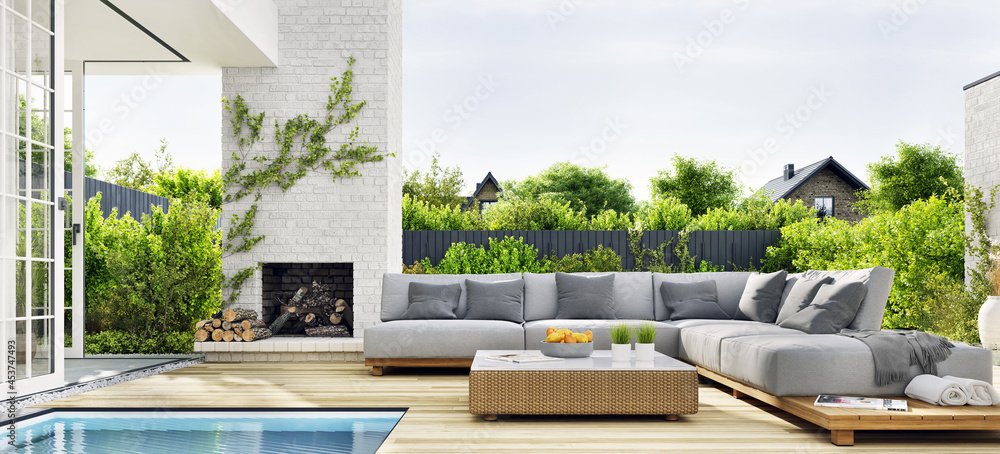
Garden Style Inspiration
-
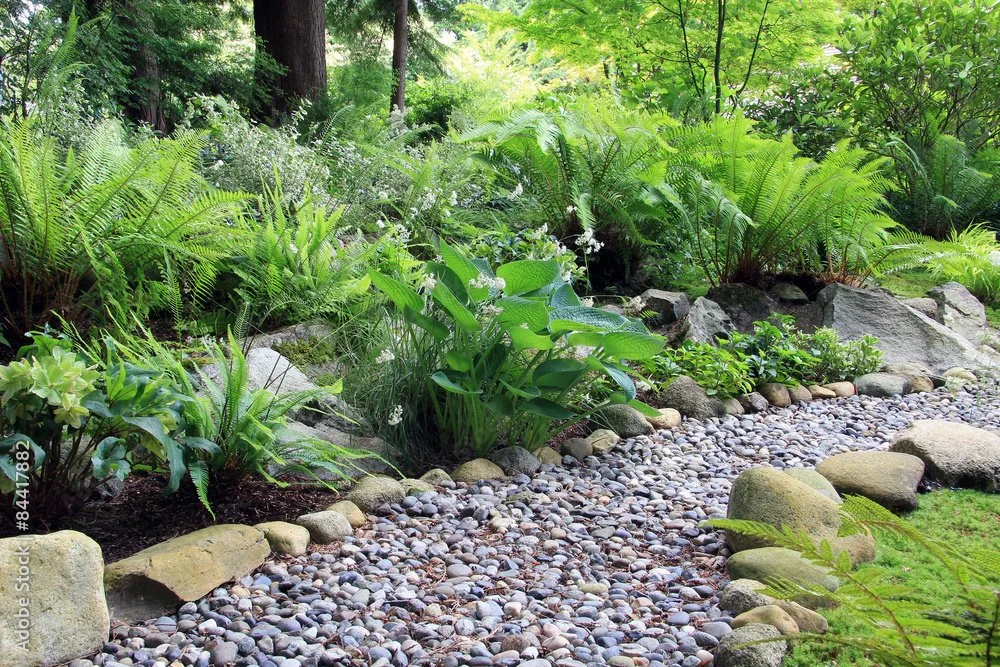
Northwoods Garden Style
A North Woods garden style is a type of landscape design that is inspired by the natural beauty of the Northern forests. This style often includes a mix of evergreen and deciduous trees, as well as native plants and flowers. It may also include elements such as streams, waterfalls, and stone features to create a sense of serenity and tranquility.
In a North Woods garden, the goal is to create a space that feels like an extension of the surrounding natural environment. This style is often characterized by a sense of informality and a lack of symmetry, as well as a focus on natural materials and textures.
It is a popular choice for gardens in colder climates, as it allows homeowners to bring a bit of the outdoors inside and enjoy the beauty of nature all year round.
-
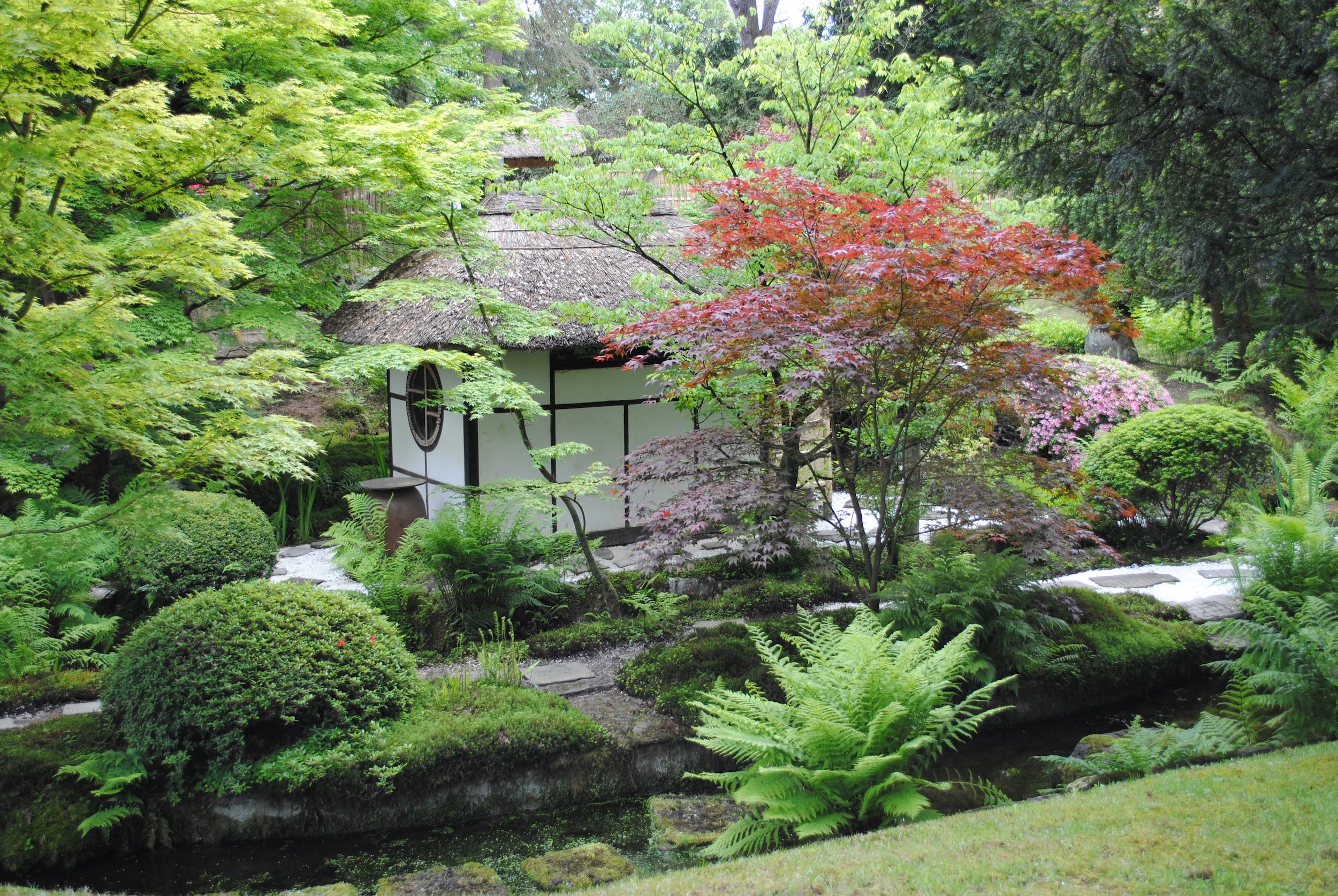
Japanese Garden Style
Japanese gardens are a type of garden that originated in Japan and are designed to mimic the natural beauty of the surrounding landscape. They typically feature elements such as water, stones, and plants, and are intended to create a sense of peace and tranquility.
Japanese gardens often incorporate symbolism and meaning into their design. For example, a pond may represent the ocean, and the placement of stones may represent mountains or islands.
Japanese gardens may also include features such as lanterns, bridges, and tea houses, and may be designed to be viewed from a specific vantage point, such as from a veranda or a garden path.
Japanese gardens are known for their simplicity and use of natural materials. They often use plants that are native to Japan, such as bamboo and cherry blossom trees, and may also include other plants that are well-suited to the local climate.
Japanese gardens are often smaller in scale than Western gardens, and may be designed to be viewed from a seated position, such as while seated on a bench or while participating in a tea ceremony.
-
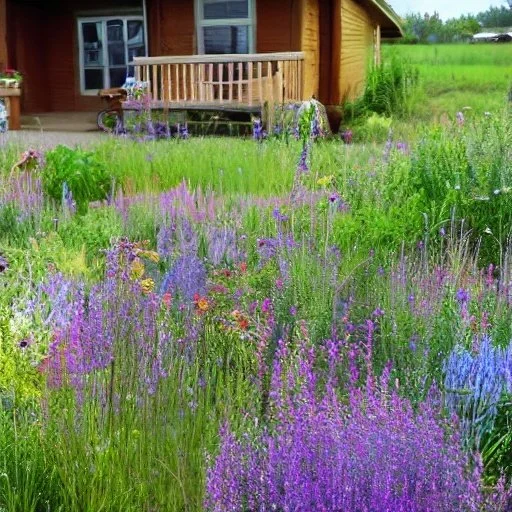
Ecological Garden Style
An ecological garden style for residential properties is a type of landscape design that incorporates principles of sustainability and environmental responsibility into the design of a private home's outdoor spaces. This may include using native plants that are well-suited to the local climate and soil conditions, as well as incorporating elements such as rain gardens and composting systems to help manage water and waste.
An ecological garden style for residential properties may also aim to support local wildlife by providing habitats for birds, bees, and other animals.
The goal of an ecological garden style for residential properties is to create outdoor spaces that are both aesthetically pleasing and functional, while also minimizing their impact on the environment.
This type of garden style may be characterized by a natural, informal look, with a focus on native plants and materials that blend seamlessly with the surrounding ecosystem.
-
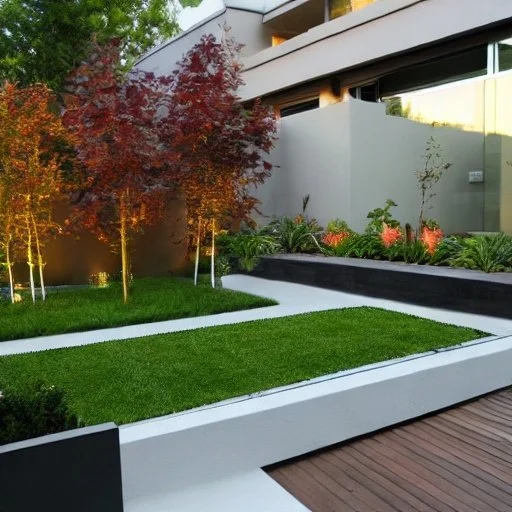
Modernism Garden Style
A mid-century modern garden style is a type of landscape design that is inspired by the mid-century modern design movement of the 1940s, 1950s, and 1960s. This style is characterized by the use of clean lines, simple forms, and a focus on functionality.
Mid-century modern garden styles often incorporate hardscaping elements such as paving stones, retaining walls, and outdoor furniture, and may include the use of materials such as concrete, wood, and metal. Plants are often chosen for their structural form and may be used in a more minimalist manner.
The goal of a mid-century modern garden style is to create a space that is both functional and aesthetically pleasing, with a focus on simplicity and efficiency. This style is often associated with urban environments, but it can also be incorporated into gardens in other settings.
-

European Romantic Garden Style
A European romantic garden style is a type of landscape design that is inspired by the ornate, formal gardens of Europe. This style often features a symmetrical layout, with paths and walkways leading to various garden rooms or areas. It may include elements such as sculptures, fountains, and topiaries, as well as a variety of flowers and plants.
A European romantic garden style is typically characterized by a sense of grandeur and drama, with an emphasis on intricate details and a wide variety of plants and flowers. This style is often associated with gardens of the 18th and 19th centuries, and it is often used to create a sense of history and tradition in a landscape.
European garden styles may also be influenced by the local climate and cultural traditions of the region in which they are located. Some examples of European garden styles include English cottage gardens, Italian formal gardens, and French parterres.
-
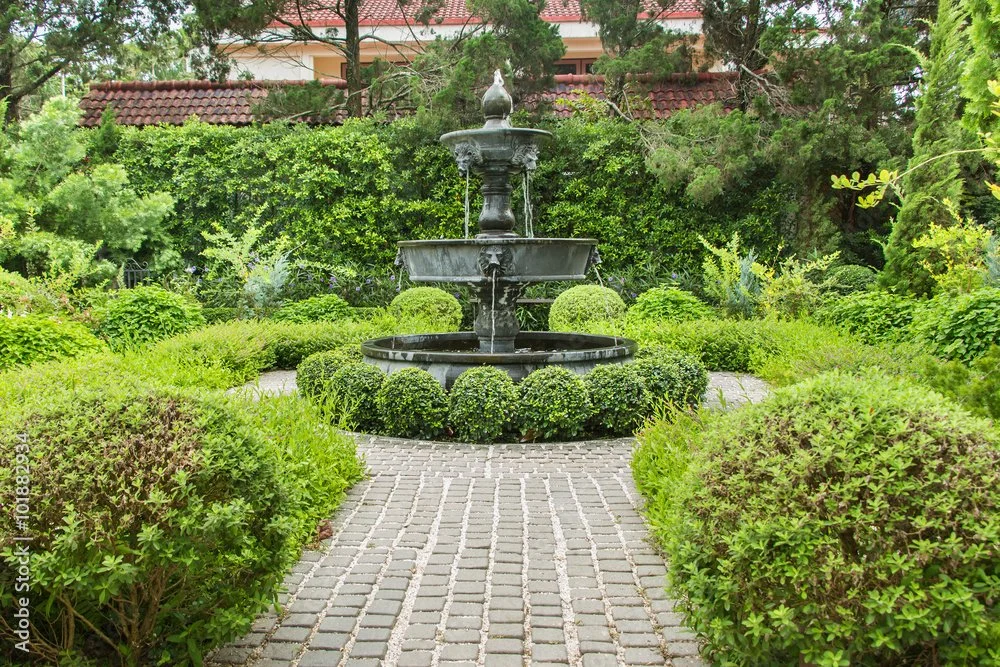
English Garden Style
An English garden style is a type of landscape design that is inspired by the gardens of England. This style is often characterized by a informal, romantic look, with a mix of flowering plants, herbs, and vegetables. English garden styles may also include elements such as water features, stone walls, and winding paths.
The goal of an English garden style is to create a space that is both functional and aesthetically pleasing, with a focus on creating a sense of harmony and balance.
English garden styles may be influenced by the local climate and cultural traditions of England, as well as the personal preferences of the homeowner.
There are a number of reasons why English gardens are considered beautiful. One reason is that they often incorporate a wide variety of plants and flowers, creating a colorful and diverse landscape. English gardens are also known for their use of winding paths and informal layouts, which can add interest and movement to the garden. Another reason that English gardens are considered beautiful is that they often include features such as water features, stone walls, and sculptures, which can add visual interest and a sense of history to the garden.
-

Geometric Garden Style
A geometric garden style is a type of landscape design that is characterized by the use of geometric shapes, symmetrical layouts, and clean lines. The goal of a geometric garden style is to create a sense of order and balance in the landscape.
Geometric gardens are often associated with midcentury modernism. There are a number of elements that can contribute to the beauty of a modern garden. Some of these may include:
Clean lines and geometric shapes: Modern gardens often feature a sleek, minimalist aesthetic, with a focus on clean lines and geometric shapes. This can create a sense of order and balance in the garden.
Use of materials: Modern gardens may incorporate a variety of materials, such as concrete, wood, and metal, to add texture and interest to the landscape.
Plant selection: Modern gardens may include a mix of native and exotic plants, chosen for their structural form and architectural qualities.
Lighting: Modern gardens may incorporate lighting elements to create a sense of drama and highlight key features of the garden.
Water features: Modern gardens may include water features such as fountains or pools to add a sense of tranquility and movement to the landscape.
Overall, the beauty of a modern garden is often determined by the way in which the various elements are combined and integrated to create a cohesive, harmonious whole.
-
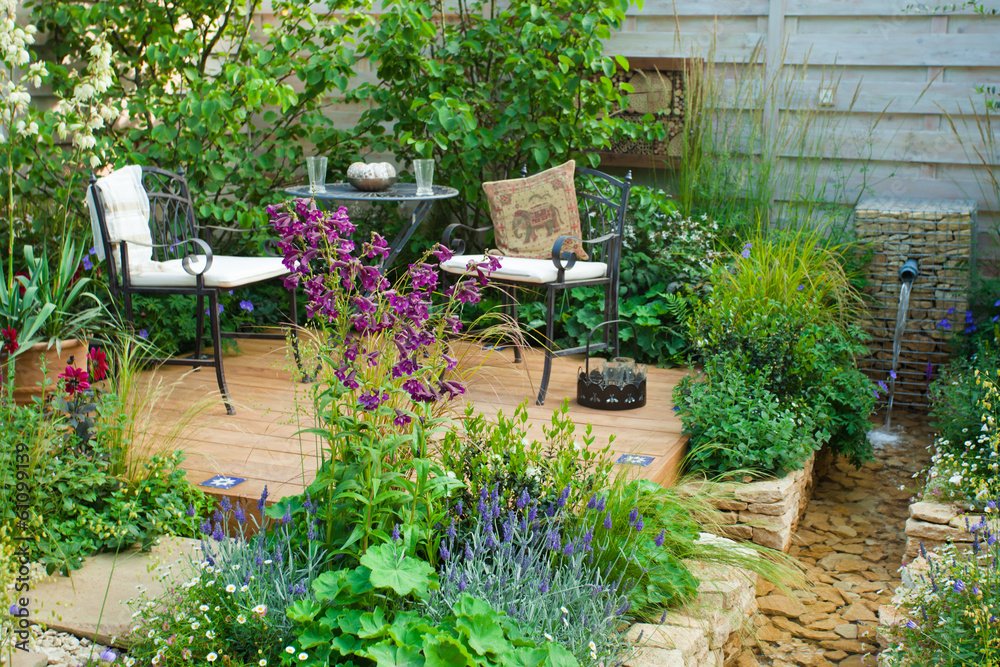
Rustic Garden Style
A rustic garden style is a type of landscape design that is characterized by the use of natural materials and a focus on creating a sense of connection with the surrounding environment. This style often includes the use of wood, stone, and other natural materials, as well as a mix of native plants.
A rustic garden style may also incorporate elements such as water features, outdoor fireplaces, and rustic furniture to create a sense of warmth and coziness.
The goal of a rustic garden style is to create a space that feels informal and relaxed, and that reflects the natural beauty of the surrounding environment.
This style is often associated with country or rural settings, and it can be a good choice for homeowners who want to create a space that feels like an extension of the outdoors.
-
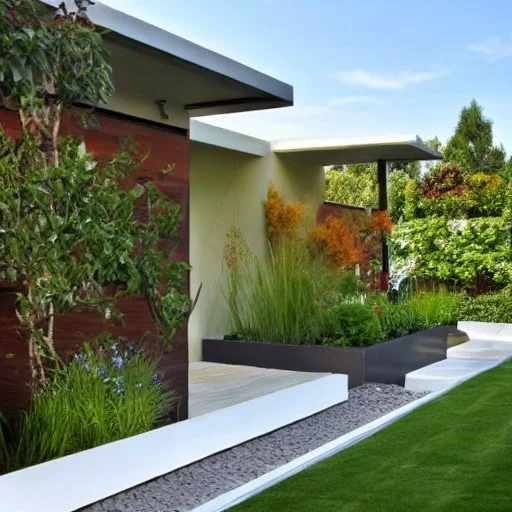
Contemporary Garden Style
A contemporary garden style is a type of landscape design that is characterized by the use of modern materials and techniques. This may include the use of sleek, minimalist design elements such as clean lines, geometric shapes, and a limited color palette. A contemporary garden style may also incorporate a variety of materials, such as concrete, wood, and metal, and may include features such as water features, lighting, and outdoor furniture. The goal of a contemporary garden style is to create a space that is both functional and aesthetically pleasing, and that reflects the current trends in landscape design.
A contemporary garden style is often associated with urban environments, but it can also be incorporated into gardens in other settings. This type of garden style is often characterized by a modern, minimalist aesthetic, with a focus on clean lines and a limited color palette. It may also include the use of contemporary materials and techniques, such as sustainable design elements and low-maintenance plantings.
Overall, a contemporary garden style is designed to create a sleek, stylish, and modern outdoor space.
-

Production Garden
A food production garden is a type of garden that is specifically designed for the purpose of growing food crops. This may include vegetables, herbs, fruit trees, and other edible plants.
A food production garden may be located in a backyard, on a patio or balcony, or in a community garden plot. The goal of a food production garden is to produce fresh, nutritious food for the home or community.
Food production gardens may be designed using a variety of techniques, such as raised beds, square foot gardening, or traditional row planting. They may also incorporate elements such as composting systems, irrigation systems, and trellises to support the growth of the plants.
Food production gardens can be a great way for people to grow their own food, save money on groceries, and connect with the natural environment.
-
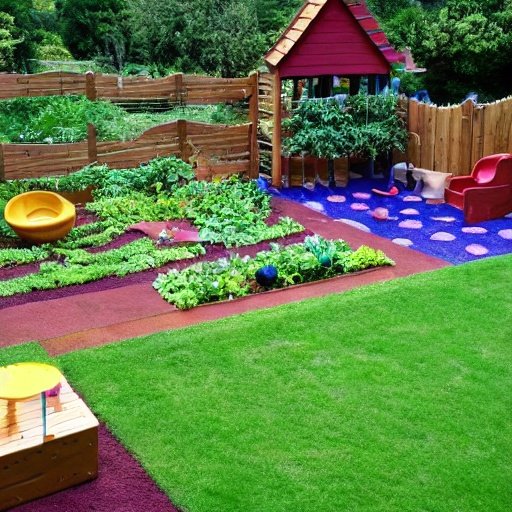
Garden for Play
A garden for play is a type of outdoor space that is specifically designed for children to play in. This may include the use of playground equipment, such as swings, slides, and monkey bars, as well as areas for imaginative play, such as sandboxes and playhouses.
A garden for play may also include areas for sports and games, such as a basketball hoop or a lawn for soccer or other games. The goal of a garden for play is to provide children with a safe and enjoyable space to play, explore, and learn.
A garden for play may be located in a backyard, in a public park, or in a school or community center. It is an important aspect of a child's development, as it allows them to be active and engage in physical activity, socialization, and imaginative play.
A garden for play is also associated with natural playscapes. A natural playscape is a type of outdoor space that is designed to provide children with a natural, unstructured environment for play and exploration. This may include the use of natural materials such as wood, stone, and water, as well as a variety of plants and other elements from the natural environment. A natural playscape may also include areas for imaginative play, such as sandboxes and playhouses, as well as opportunities for physical activity, such as climbing trees or playing games on a lawn. The goal of a natural playscape is to provide children with a safe and engaging outdoor space that fosters a sense of connection with the natural world.
-

Garden for Entertainment
An entertainment garden style is a type of landscape design that is specifically geared towards creating an outdoor space that is suitable for entertaining guests. This may include the use of outdoor furniture, such as tables, chairs, and seating areas, as well as features such as outdoor kitchens, fireplaces, and water features.
An entertainment garden style may also include areas for activities such as sports and games, or for relaxing and enjoying the surroundings. The goal of an entertainment garden style is to create a space that is both functional and aesthetically pleasing, and that is well-suited for hosting social gatherings and events.
This type of garden style may be incorporated into a variety of different landscapes, and may include elements such as lighting and sound systems to enhance the ambiance of the space.
-

Minimalist Garden Style
A minimalist garden style is a type of landscape design that is characterized by the use of simple, uncluttered design elements. This may include the use of clean lines, geometric shapes, and a limited color palette.
A minimalist garden style may also incorporate a variety of materials, such as concrete, wood, and metal, and may include features such as water features, lighting, and outdoor furniture.
The goal of a minimalist garden style is to create a space that is both functional and aesthetically pleasing, with a focus on simplicity and efficiency. A minimalist garden style is often associated with urban environments, but it can also be incorporated into gardens in other settings.
This type of garden style is often characterized by a modern, minimalist aesthetic, with a focus on clean lines and a limited color palette. It may also include the use of contemporary materials and techniques, such as sustainable design elements and low-maintenance plantings.
Overall, a minimalist garden style is designed to create a sleek, stylish, and modern outdoor space.
-
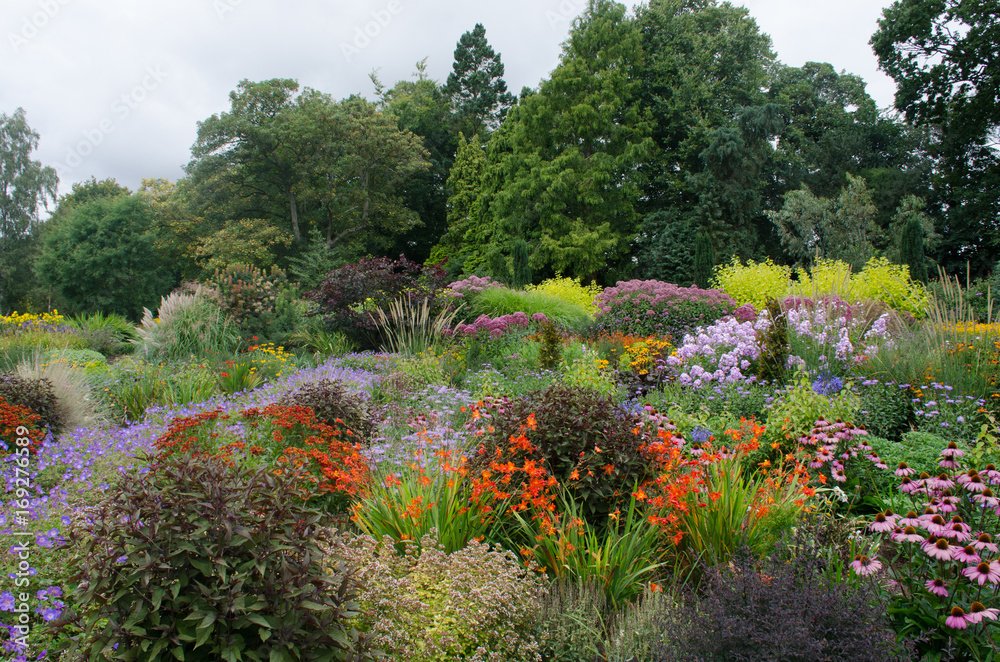
Bee Friendly/ Pollinator Garden Style
A pollinator garden style is a type of landscape design that is specifically designed to support the health and well-being of pollinators such as bees, butterflies, and hummingbirds. This may include the use of flowering plants that bloom at different times throughout the year to provide a continuous food source for pollinators, as well as the inclusion of water sources, such as shallow dishes or birdbaths, to help pollinators stay hydrated.
A pollinator garden style may also include nesting sites, such as bee boxes or bare patches of ground, to provide places for pollinators to raise their young.
The goal of a pollinator garden style is to create a space that is both functional and aesthetically pleasing, and that supports the health and well-being of pollinators. This type of garden style can be a great way for homeowners to help support the local pollinator population and contribute to the health of the environment.
-
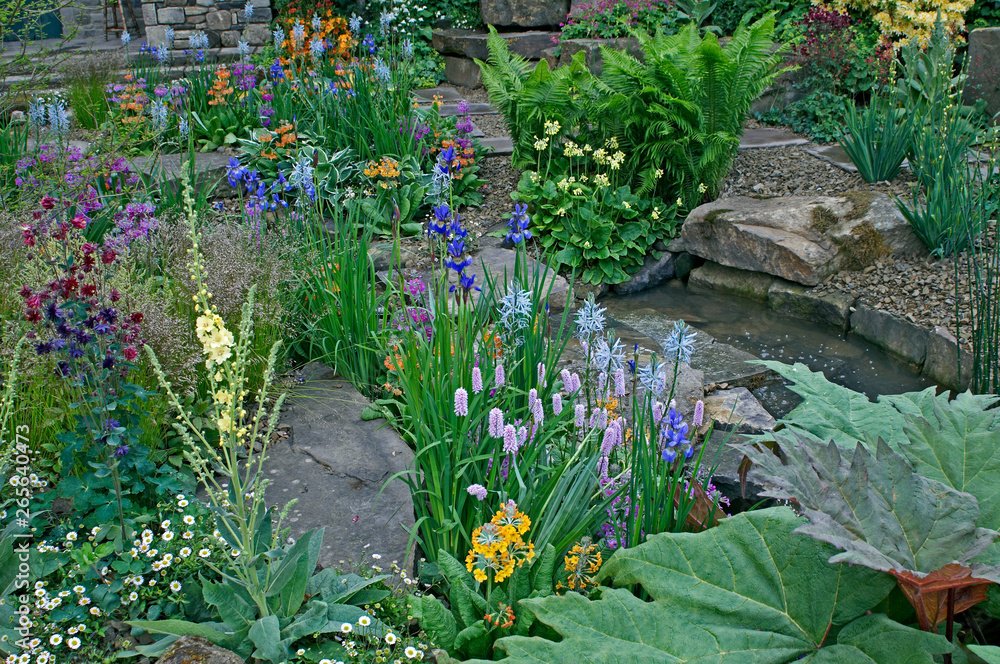
Storm Water Garden Style
A storm water garden style is a type of landscape design that is specifically designed to manage and mitigate the impact of storm water runoff on the environment. This may include the use of features such as rain gardens, swales, and green roofs to capture and filter storm water runoff, as well as the use of permeable paving materials to allow water to infiltrate into the ground.
A storm water garden style may also include the use of native plants that are well-suited to local soil and climate conditions, and that can help to absorb and filter storm water.
The goal of a storm water garden style is to create a landscape that is both functional and aesthetically pleasing, and that helps to protect the environment by managing storm water runoff in a sustainable manner.
-
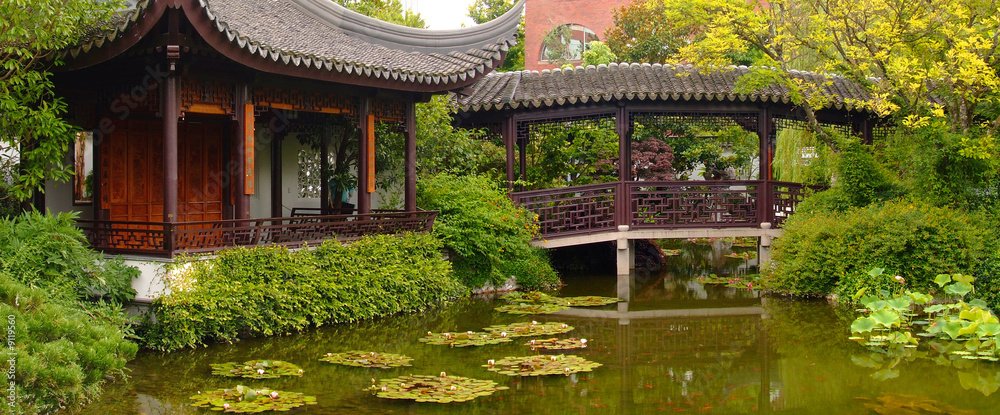
Chinese Garden Style
A Chinese garden style is a type of landscape design that is inspired by the traditional gardens of China. This style is often characterized by the use of natural materials, such as rocks, water, and plants, and by the incorporation of elements such as bridges, pavilions, and water features.
A Chinese garden style may also include the use of symbolic elements, such as rock formations, plants, and other features, which are believed to have spiritual or symbolic significance.
The goal of a Chinese garden style is to create a space that is both functional and aesthetically pleasing, and that reflects the cultural traditions of China.
Chinese garden styles may be influenced by the local climate and cultural traditions of the region in which they are located, as well as by the personal preferences of the homeowner.
-
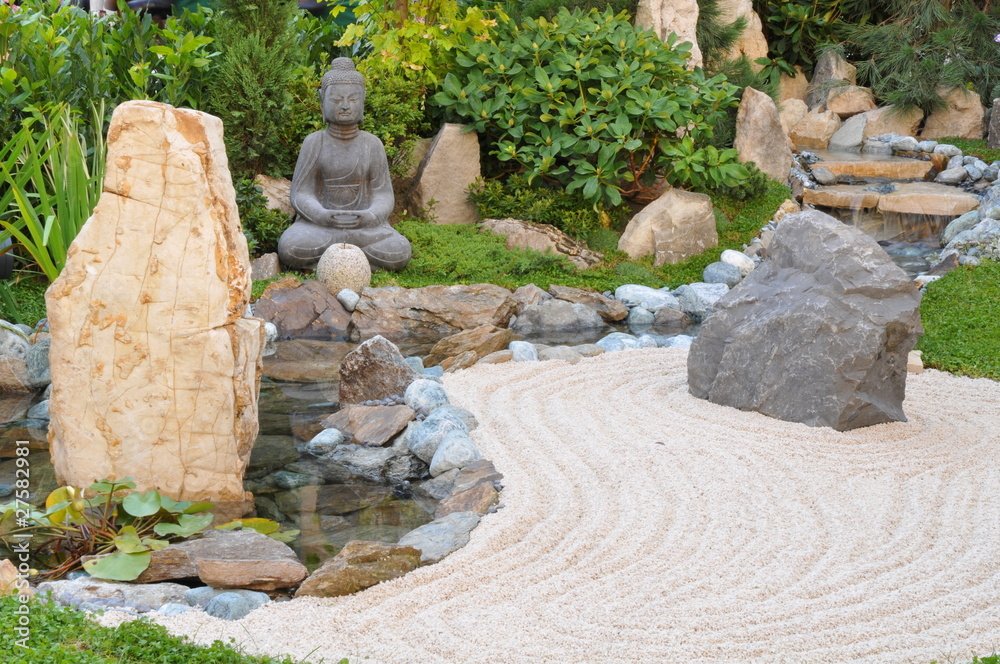
Zen Garden Style
A Zen garden style is a type of landscape design that is inspired by the traditional gardens of Japan. This style is characterized by the use of natural materials, such as rocks, water, and plants, and by the incorporation of elements such as sand or gravel raked into patterns, and stone or wooden structures.
Zen gardens are often designed to be contemplative spaces, and are intended to promote relaxation, meditation, and a sense of inner peace.
The goal of a Zen garden style is to create a space that is both functional and aesthetically pleasing, and that reflects the cultural traditions of Japan.
Zen garden styles may be influenced by the local climate and cultural traditions of the region in which they are located, as well as by the personal preferences of the homeowner.
Overall, a Zen garden style is designed to create a peaceful, calming, and harmonious outdoor space.
-
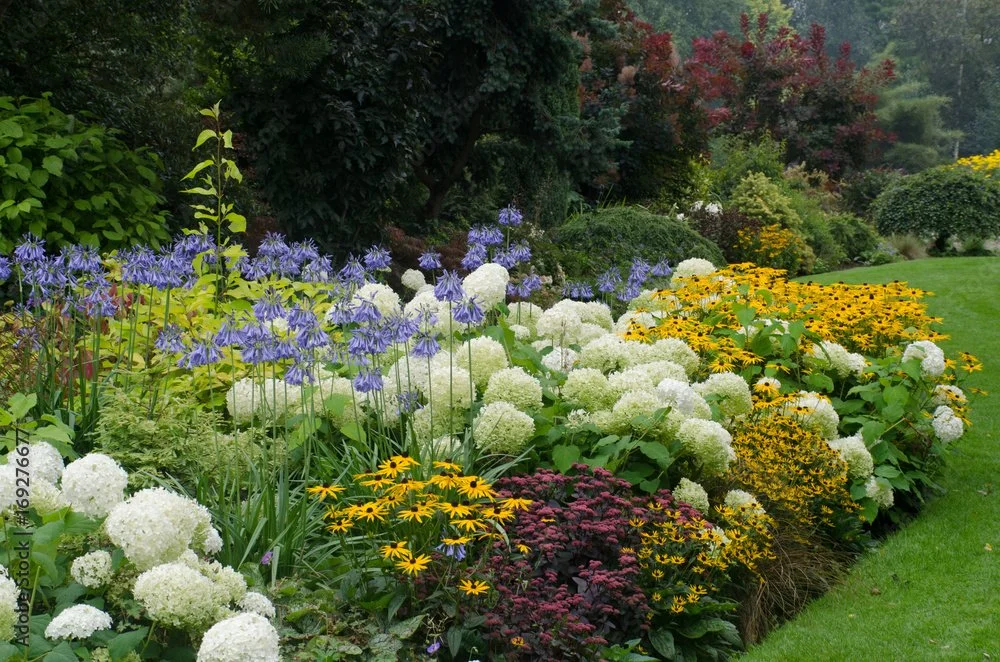
Therapeutic Garden Style
A therapeutic garden style is a type of landscape design that is specifically designed to promote health and well-being. This may include the use of plants and other natural elements to create a sense of calm and relaxation, as well as the incorporation of features such as water features, seating areas, and paths for walking and contemplation.
A therapeutic garden style may also include elements such as raised beds or other accessible features to make the garden more accessible to people with disabilities or mobility issues.
The goal of a therapeutic garden style is to create a space that is both functional and aesthetically pleasing, and that provides a range of physical and mental health benefits.
This type of garden style may be incorporated into a variety of different settings, including hospitals, nursing homes, and other healthcare facilities, as well as private homes and public spaces.
-
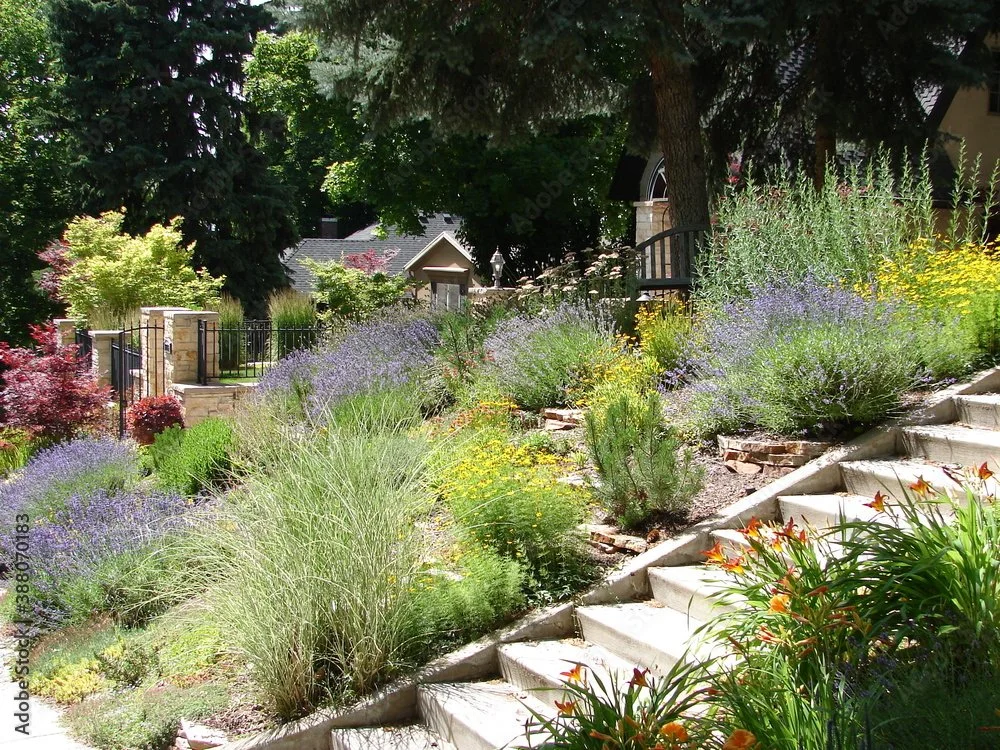
Xeriscaping
Xeriscaping is a method of landscaping that is designed to conserve water and minimize the need for irrigation. This is typically accomplished by using drought-resistant plants, mulch, and other techniques to reduce the amount of water needed to maintain the landscape.
Additionally, xeriscaping often incorporates natural elements such as rocks and boulders, and may use native plants to create a landscape that is well-suited to the local climate. It is widely used in arid regions, but can also be applied to other regions as well.
It's important to keep in mind that Xeriscaping is not just about water conservation, but also about creating an ecosystem that works with the natural environment and is low maintenance for the owner.
-
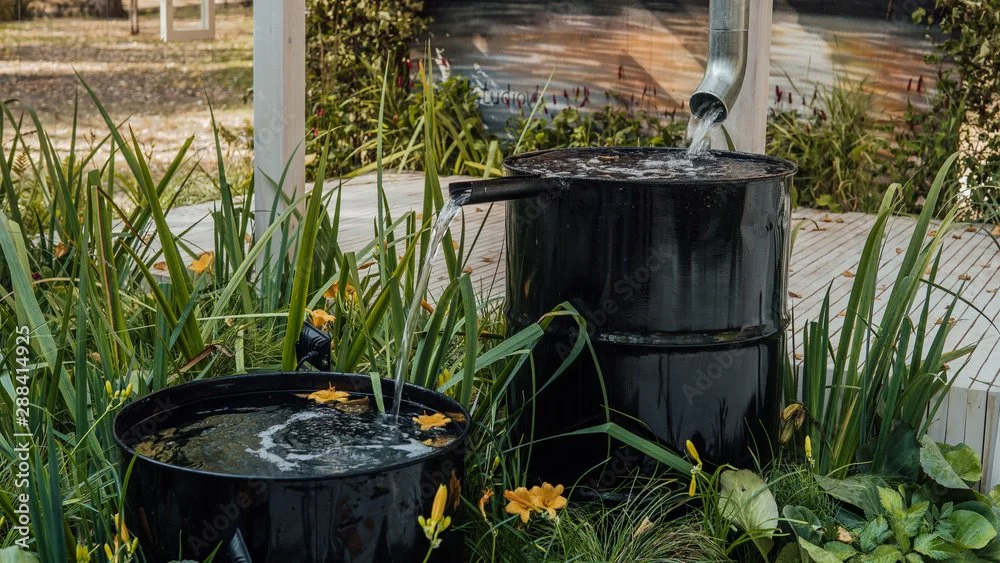
Water Conservation Gardens
A garden style that keeps all water on site is called a "rain garden".
A rain garden is a type of landscaping that is designed to capture and retain rainwater, rather than allowing it to run off into stormwater systems. The water is then used to nourish plants and trees in the garden, reducing the need for irrigation.
Rain gardens can also help to improve water quality by filtering pollutants out of the water before it enters the groundwater or nearby streams.
-
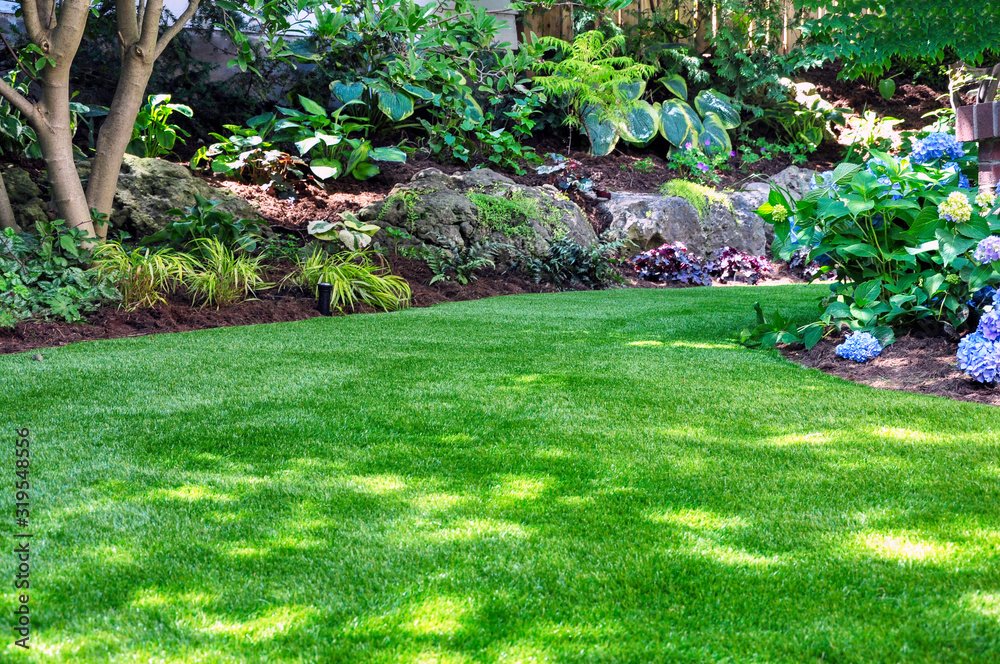
Full Shade Garden Style
A shade garden is a type of garden that is designed for areas that receive little or no direct sunlight. These areas may be shaded by trees, buildings, or other structures, or they may be located in areas that receive very little sun exposure due to their location.
In a shade garden, plants are chosen that can thrive in low light conditions. These can include shade-loving perennials, ferns, hostas, impatiens, and bleeding hearts, as well as mosses, groundcovers, and other plants that can grow in low light conditions. Some shade-loving annuals like coleus, caladium, and begonias can also be used to add color to the garden.
The goal of a shade garden is to create a lush and colorful display of plants in an area where traditional sun-loving plants would not thrive.
Request Free Design Consultation
Green City is a subsidiary of Spaces Design Build, specializing in outdoor living spaces, interior landscapes, architecture, and interior design, with projects spanning the United States and countries around the world.
